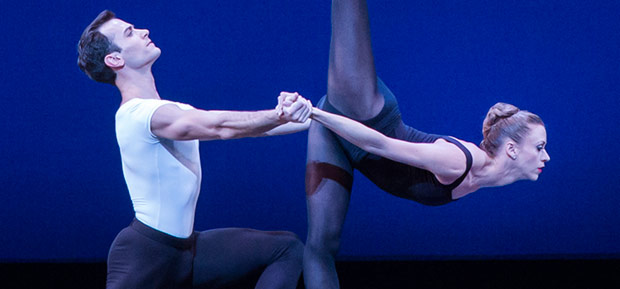
© Lindsay Thomas. (Click image for larger version)
Pacific Northwest Ballet
Square Dance, Prodigal Son, Stravinsky Violin Concerto
★★★★✰
New York, New York City Center
25 February 2016
www.pnb.org
www.nycitycenter.org
North by Northwest
Pacific Northwest Ballet is back in New York with two mixed bills, one containing three Balanchine works, the other, a triptych of contemporary ballets. Yesterday and tonight, they performed the Balanchine program: Square Dance (the 1976 version), Prodigal Son (1929), and Stravinsky Violin Concerto (1972). One choreographer, many moods, and a bracing contrast of styles.
These are all works we see regularly in New York, performed by New York City Ballet and, in the case of Prodigal Son, by American Ballet Theatre. But neither company performs at City Center, where, given the proximity of the stage, the choreography registers with particular vibrancy. The tendu, a crisp opening of the leg that marks the start of Square Dance, was as clear and incisive as a finger switching on a light. Leta Biasucci, the lead woman, executed each of her steps with such razor sharpness that even the spaces between the steps had a palpable shape and volume. This clarity and brightness of tone was sustained throughout the ballet. The sensation left behind by that opening tendu never faded: clean, simple, and beautiful.
Clarity of execution is a hallmark of this Seattle-based company, which has been led since 2005 by the former New York City Ballet star, Peter Boal. A company’s dancing often reflects that of its leader; Boal was known for the pristine classicism and nobility of his dancing. All the men in the company have it to a certain degree, though they tend to project with a more hearty sunniness. (Dancers outside of New York smile more.)
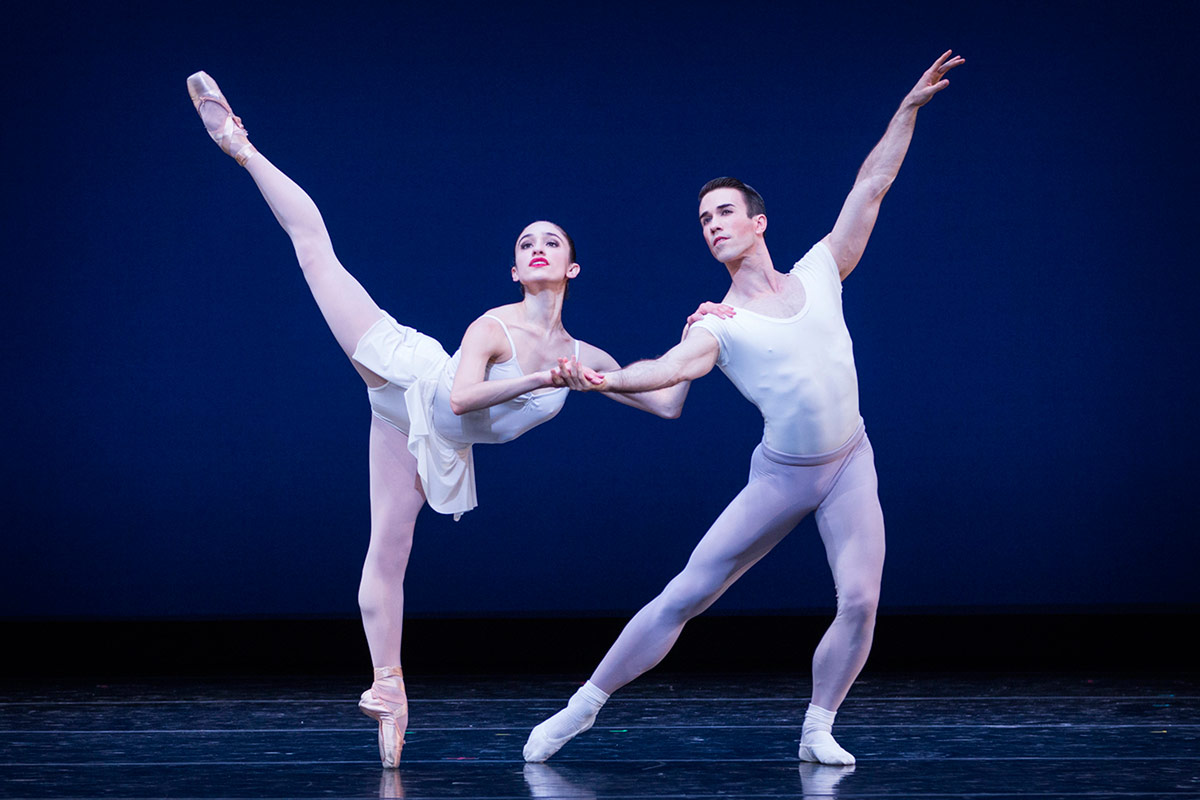
© Lindsay Thomas. (Click image for larger version)
At times one might wish for a slightly more assertive attack, a bit of an edge. Square Dance, conceived as a luminous homage to folk dancing – set to music by Vivaldi and Corelli – contains an extraordinary solo for the lead man, added in 1976. Out of nowhere, it seems, the specter of death appears. Benjamin Griffiths danced the deceptively tricky choreography with weight and fullness (especially in the upper body) but didn’t manage to sustain its air of mystery, the image of a man struggling against an immutable force. He was more temperamentally suited to the gigue, in which he led a battalion of men in a dance that gave off a growing sense of joy.
The company brought its own orchestra, which played with increasing authority as the evening proceeded (Square Dance was a little rough). Both the Prokofiev score of Prodigal Son and Stravinsky’s Concerto in D were incisively played, with a strong emphasis on rhythmic punch. The solo violinist in the latter, Michel Jinsoo Lim, gave the melodic line some welcome muscle. (Both were conducted by Emil de Cou.)
Prodigal Son, Balanchine’s early biblical ballet for the Ballets Russes, still surprises with its strangeness, the acrobatic partnering, the grotesquery of the scull-capped “goons” the Prodigal encounters on his travels, the ingeniousness of its single set piece, a fence that becomes a table and then the hull of a ship. The PNB dancers are convincing actors, and not at all overwrought. James Moore’s take on the title character was youthful, wide-eyed, and, after being despoiled by the goons, not excessively pathetic. As the “Siren,” an exotic and predatory seductress, Lesley Rausch showed command and technical aplomb, but lacked erotic charge. Her embrace with the Prodigal was almost maternal.
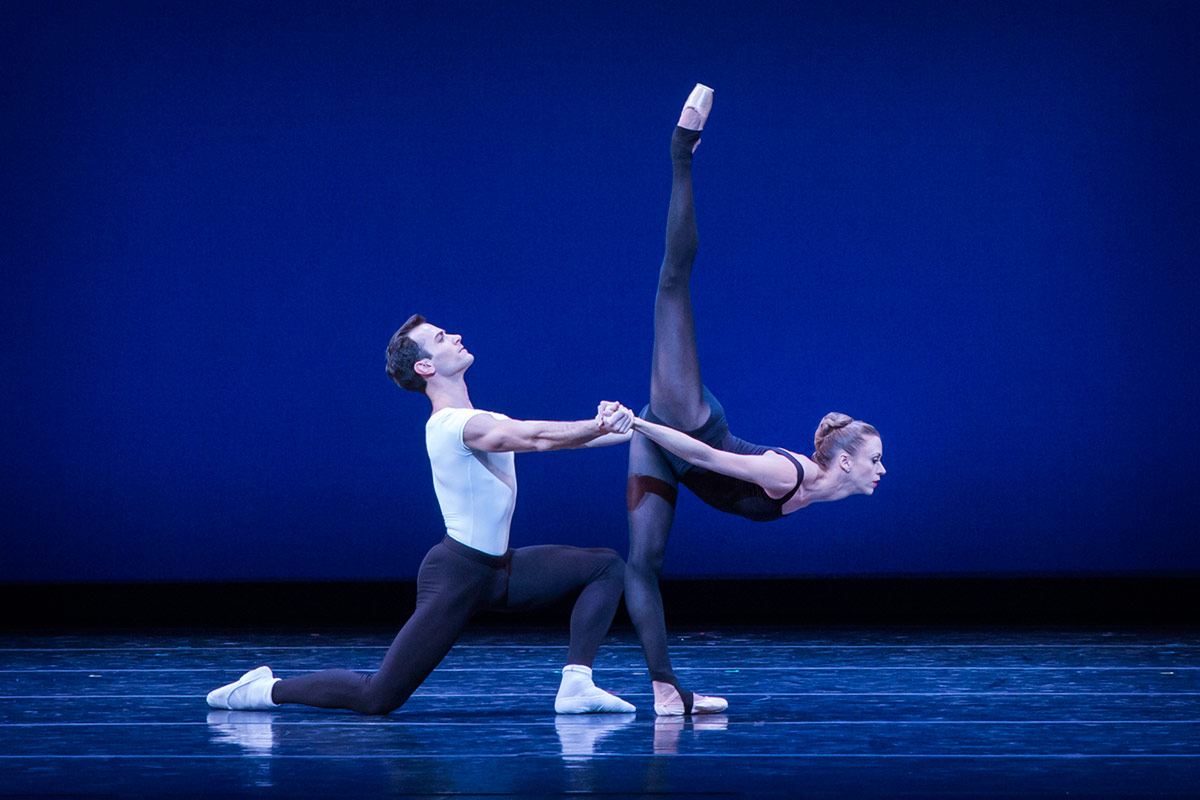
© Lindsay Thomas. (Click image for larger version)
Rausch made more of a mark in the work that followed, Stravinsky Violin Concerto, which opens with a kind of competitive gallop. Four “teams” of five tear across the stage, high-kicking, tapping out syncopated rhythms, crouching, flying. This is followed by two extraordinary pas de deux. The first is aggressive and almost vulgarly exposed – the woman arches into a backbend and walks on all fours, as if taunting her partner with her exposed body. The man ends up on his back, defeated. (This pas de deux was danced, with sang-froid, by Rausch and Jerome Tisserand.) The second is more twisted: the man and woman seem hopelessly enmeshed. He twists her around by the waist again and again and, in an act of uncomfortable domination, pushes her knees together. She nestles in the crook of his arm, as if seeking his protection.
But, as danced by Noelani Pantastico, the pas de deux took on a different tone. Pantastico is an extremely stylish, assertive dancer, no delicate flower. So, instead of looking waifish, as the woman in this duet often does, she appeared to be subtly controlling her partner, using her wiles to manipulate him, to keep him close. The handsome and forthright Orza willingly submitted. The power dynamic was altered, but the pas de deux still worked.
With the departure of Carla Körbes (who retired last year) Pantastico may now be the most commanding dancer in the company. For seven years after leaving PNB, Pantastico danced with Les Ballets de Monte Carlo, under the choreographer Jean-Christophe Maillot. She has now returned to Seattle with a touch of European flair, a chic and wit that serves her well in a work like Violin Concerto. With dancers like her, the Balanchine rep will continue prosper at PNB.












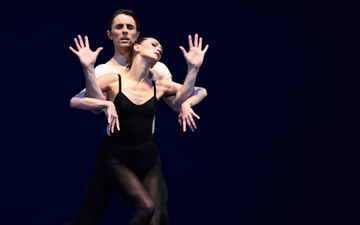
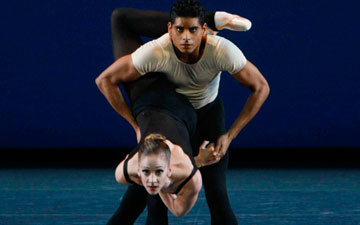
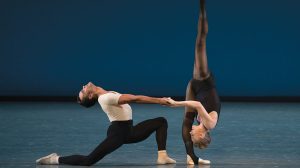


You must be logged in to post a comment.